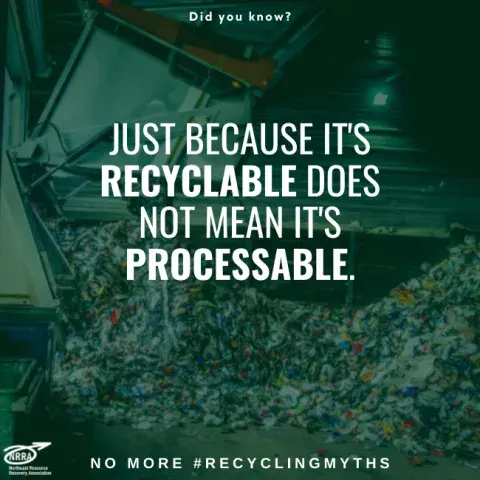
♻️JUST BECAUSE IT'S RECYCLABLE, DOESN'T MEAN IT'S PROCESSABLE.♻️
Wondering what that even means? Well, let's break it down!
Most things are recyclable, meaning if you had the machinery, expertise, and market, most things could be broken down to their parts, compressed back into raw material, and used again. Think about items that may be recycled in one town and not in another. It's not that the item magically becomes recyclable once it crosses town lines, but rather, it means that the town that recycles that item has the machinery/expertise to recycle it - or a connection to a market that wants it.
WHAT GOES INTO THE DECISION ON WHETHER OR NOT SOMETHING IS PROCESSABLE?
It depends on a few things: first, the AMOUNT of the item you have to recycle; second, the LOCATION of the processing facility; and third, the COST of recycling that item.
A good example is number 5 plastic (PP or polypropylene plastic) that you often find yogurt containers made out of. This plastic is recyclable AND often fetches a good price, BUT small towns and communities rarely have the ability to put together enough (the AMOUNT side of the equation) to make hauling and processing cost effective.
WHAT CAN I DO IF A RECYCLABLE ISN'T PROCESSABLE IN MY TOWN?
First, you can TALK to your transfer station or recycling center to find out why an item is not accepted. If it's something that is relatively easy to process - like cardboard - you can have a conversation with your town governance (eg. Select Board) on what may be needed in order to start recycling that item in your town.
Second, REDUCE or REFUSE the item - don't purchase it! This can be easier said than done, but if you don't purchase it, you won't throw it away.
Third, REUSE the container if possible.
For more information: https://www.epa.gov/recycle/recycling-basics
This material is based upon work supported under a grant by the Rural Utilities Service, United States Department of Agriculture. Any opinions, findings, and conclusions or recommendations expressed in this material are solely the responsibility of the authors and do not necessarily represent the official views of the Rural Utilities Service. Rural Community Assistance Partnership, Inc., is an equal opportunity provider and employer.
